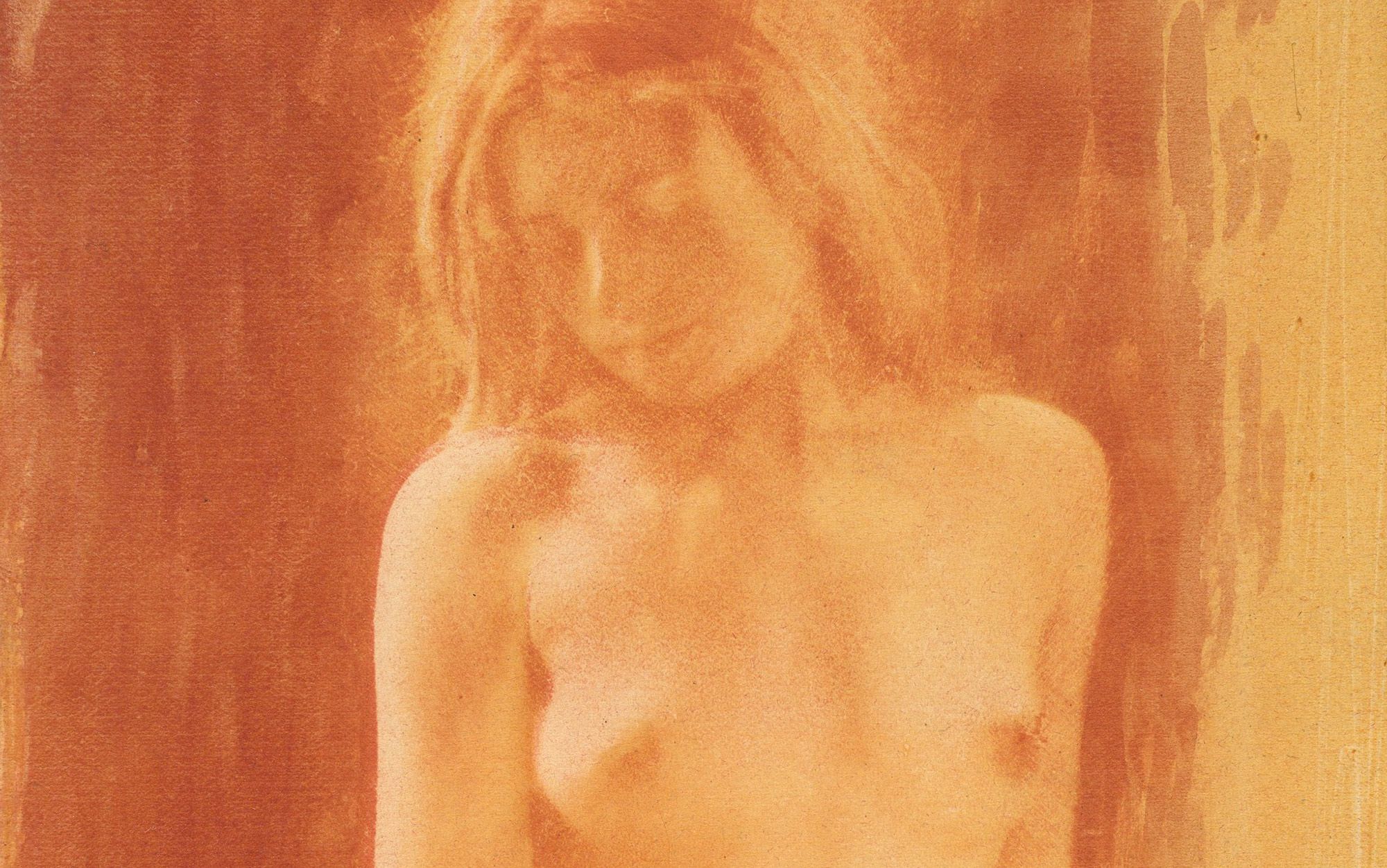by JAMIE MACKAY

Study in Orange (1904), by René Le Bègue. Alfred Stieglitz Collection, 1933. PHOTO/MET Museum, New York
A woman rests in a field surrounded by apple trees. Savouring the sounds and smells of the shaded grove, she muses on the ‘sacred recess’ of her idyllic surroundings, and surrenders herself to fantasy. The wind is ‘honey sweet’, the air perfumed with ‘musk roses’. She is waiting for a lover. ‘Come to me from Crete,’ our narrator calls out to an anonymous and distant figure. Her words are charged with desire. ‘Ice-water babbles’ among ‘flickering leafage’ while ‘horses’ – a traditional symbol of masculine virility – ‘graze knee-deep in flowers’. What has triggered this outpour of erotic yearning? Are these the daydreams of a hot summer’s day? Is the subject drunk, as her eulogising of the local ‘nectar’ might suggest? Might she even, as some critics have speculated, be masturbating?
For all the distractions of our contemporary lives, reading Sappho today remains just as exhilarating as it was 2,000 years ago when, as one of the foremost poets of the ancient world, her poems were widely anthologised. Her delicate style, her withholding of details and delaying of pleasure, has drawn admiration from such canonical figures as Charles Baudelaire and A C Swinburne, even Oscar Wilde, who trilled ‘never had Love such a singer’.
Sappho’s restraint remains strangely gratifying today, when sexuality is so intensely visual, imposed top-down through the peculiar marriage of pornography and pop culture. Her verses are themselves pornographic, of course, but we’d be shortsighted in aligning them with the music videos, high-street adverts and internet clips that dominate our sexual imaginations today. Modern porn is, on the whole, relentlessly present-tense, populated by anonymous bodies performing athletic feats for the instant gratification of a voyeuristic audience. That Sappho’s work – intimate, reflective, euphemistic – maintains its allure against such a backdrop is surely significant, then. What does her work provide that modern porn cannot? And what does this tell us about our sexual imaginations more generally?
Much of the answer can be attributed to the poet’s particular evocation of ‘the erotic’. Today, the term conjures up images of burlesque performances, of teases designed to prolong the often-rushed experience of modern sex. For the Greeks, though, Eros was not an action but a god, the son of Aphrodite herself. He was bisexual, notoriously unruly, and capable of intoxicating all beings with an irrational, manic energy. His role in literature was quite precise: to shape pothos (desire) into kharis (gratification). His preferred environments were gardens, which were in many cases imagined to be populated with nymphs and naiads. If Eros’s main duty was to facilitate sexual relationships, his divine nature also served to unite bodily experience with metaphysics through an ambiguous, quasi-magical communion.
From the outset, poetry was tasked with explaining the limits of this exhilarating and dangerous life force. All of the major classical writers – from Aeschylus and Pindar to later Roman imitators such as Ovid – dedicated meditations to the god. Sappho, though, was perhaps the most gifted at articulating his contradictory traits. In her work, Eros is not a beast, like Pan or the satyrs. He is a ‘weaver of tales’, a storyteller and seducer. At the same time, he is a ‘sweet, bitter, impossible creature’, a dualistic and ambiguous force, anarchically transgressing the boundary between pleasure and pain. One of Sappho’s most playful descriptions of Eros is as a ‘limbslackener’, a kind of cosmic lubricant. In all cases, his real power is his unique capacity to bridge the realm of ideas with corporeal reality. As Plato describes in his Phaedrus, there is no separation between ‘forms’ and ‘the body’ in the sphere of Eros: both worlds are united through the dualistic ontology of sex as both an activity and an idea.
Aeon for more
